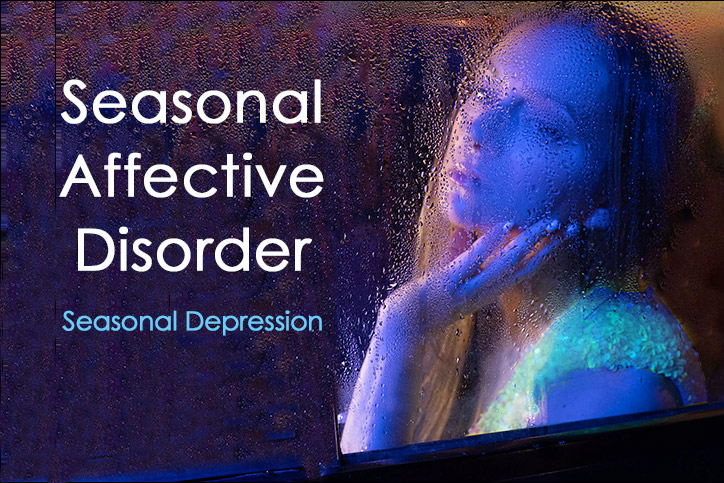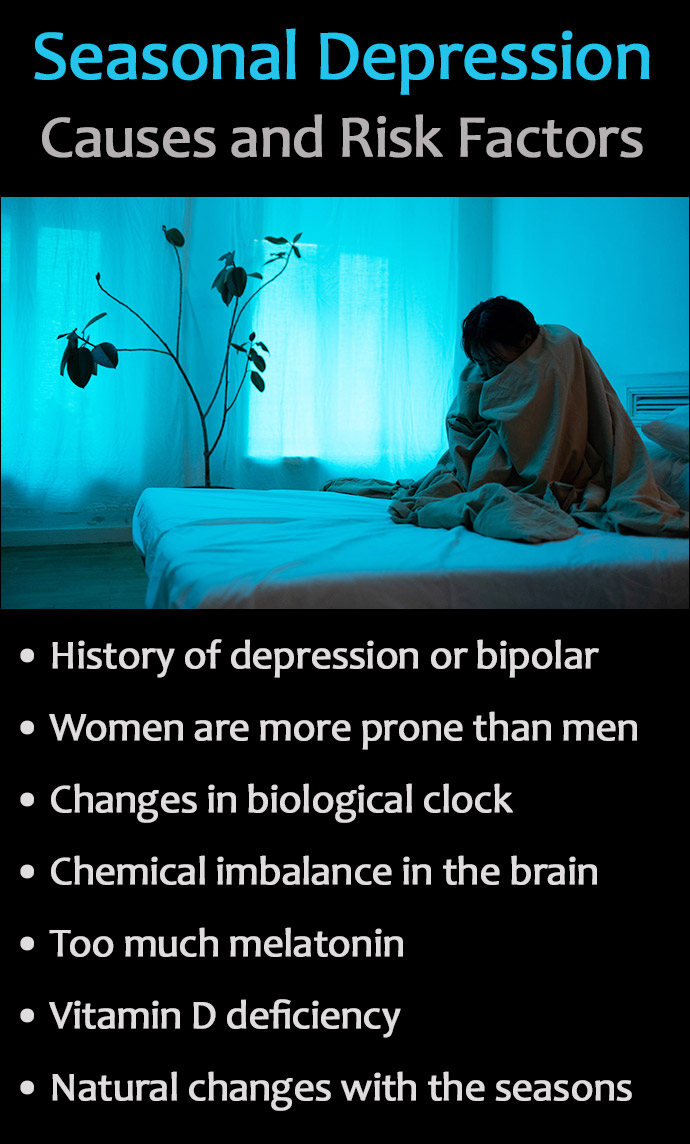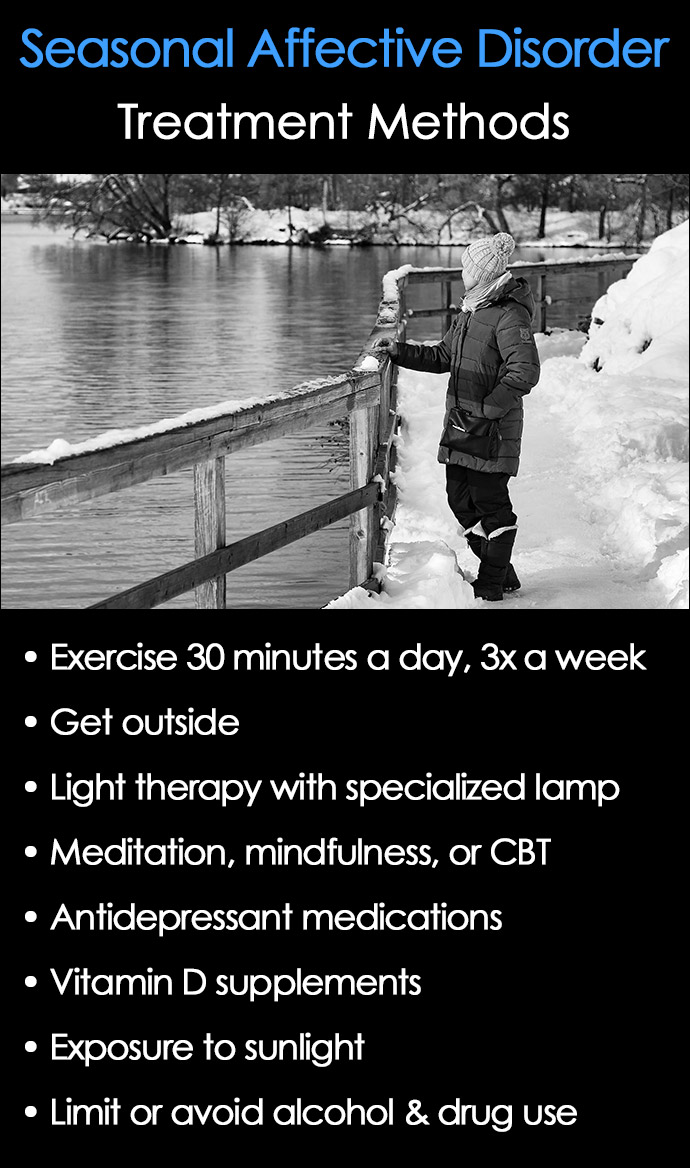Table of Contents
Seasonal Affective Disorder (SAD) is a form of depression that generally occurs in the winter months, which is why it is sometimes referred to as “seasonal depression.”
The disorder is more than just a bout of the winter blues. Left untreated, the symptoms of Seasonal Affective Disorder can have a serious impact on a person’s life.
Understanding that the winter months might negatively affect mood and depression can make it easier for people to takes steps to minimize the impact on their mental health.
What is Seasonal Affective Disorder?
Seasonal Affective Disorder (SAD) is one of the most common types of depression that typically occurs as the seasons change from fall to winter when there are fewer hours of daylight.
For most people, seasonal affective disorder symptoms begin to subside as the longer days of spring return and they spend more time outside in natural sunlight.
By some estimates, around 5 percent of people in the United States are affected by seasonal depression, with another 10 to 15 percent experiencing a more mild form of the condition known as the “winter blues.”
However, full blown seasonal depression can be incredibly challenging because it often changes the way a person feels and thinks.
As the symptoms of seasonal affective disorder worsen, many individuals find their ability to carry out daily responsibilities is much more difficult than it should be, and for some people, nearly impossible.
Being able to spot seasonal affective disorder symptoms can help people get a head start on self-care strategies and treatment approaches to minimize the disorder’s severity.
Seasonal Affective Disorder Symptoms
Because seasonal affective disorder is a form of depression, many of the related symptoms result in mood changes, shifts in energy, and behavioral problems.
Seasonal Affective Disorder Symptoms may include some of the following:
- Feelings of sadness, hopelessness, or worthlessness for most of the day every day
- Anxiety, or being agitated and irritable
- Difficulty focusing and concentrating on things like work or school
- Withdrawing from friends, family, and other social situations
- A loss of interest and pleasure in activities normally enjoyed
- Weight gain associated with a craving carbohydrates and sugar
- Increase in alcohol or drug use as a way to self-medicate the symptoms
- Lack of energy, fatigue, or lethargy
- Problems sleeping and typically sleeping too much
- Thoughts of suicide
The intensity of seasonal depression symptoms will vary from person to person, and some individuals may only experience a few of them.
Causes and Risk Factors for Seasonal Depression
Like other forms of depression, scientists are not exactly sure what causes seasonal affective disorder.
However, those with other mental health disorders like a family history of depression, bipolar disorder, and schizophrenia are usually at a greater risk for developing the condition.
Signs and symptoms of seasonal depression tend to start in early adulthood, often between the ages of 18 to 30 years old.
Women are more prone to the disorder than men, though researchers are unsure why.
Other Causes of Seasonal Depression can include the following:
Changes in Biological Clock
Because the shorter days of the fall and winter months have less sunlight, parts of the brain that regulate mood, hormones, and sleep begin to shift.
There is some evidence to suggest that these changes can alter a person’s biological clock as the body and brain try to adjust to the lack of daylight hours.
Chemical Imbalance in the Brain
Sunlight actually helps regulate serotonin, a happiness chemical messenger in the brain that is associated with mood and being happy.
Those with other forms depression may already have less than typical levels of the feel-good neurotransmitter, so the lack of sunlight can make these issues even worse than normal.
Too Much Melatonin
Melatonin is another chemical in the brain that helps people regulate sleep patterns and mood. With less sunlight during the fall and winter months, a person’s brain may produce too much melatonin.
Increased levels of melatonin can leave some people feeling sluggish and chronically tired in the darker winter months.
Vitamin D Deficiency
Sunlight helps the body produce vitamin D, which in turn helps boost serotonin levels.
Fewer daylight hours and sunshine during the winter months can cause a decrease in vitamin D intake and serotonin production, which leads to negative mood changes for many people.
Eating foods that increase serotonin is a natural way to increase vitamin D and help regulate mood and reduce depression.
Natural Changes With the Seasons
It is common for people who experience SAD symptoms to become more anxious as the fall and winter months approach, leaving them feeling tense, stressed, or more depressed than usual.
While it’s unclear if that actually causes seasonal affective disorder, these negative patterns might certainly play a role in the onset of seasonal depression symptoms.
Seasonal Affective Disorder Treatment
The good news is that there are effective treatment methods for seasonal affective disorder, as well as self-care techniques that can lessen the impact of the condition.
While it’s important to seek professional help for depression that impacts daily life, learning how to reduce seasonal depression symptoms can prevent the condition from becoming more severe.
Seasonal Depression Treatment Methods include:
- Regular exercise for 30 minutes a day, at least three times a week is highly recommended
- Exercise outside during the daylight hours whenever possible
- Light therapy with a specialized seasonal depression lamp for 15 to 30 minutes in the morning has shown to decrease some of the associated symptoms of the condition
- Counseling and talk therapy with approaches like meditation, mindfulness, and Cognitive Behavioral Therapy (CBT) are not only effective, but have shown to have a lasting impact on lessening seasonal affective disorder symptoms
- Antidepressant medications, specifically those that help in the regulation of serotonin, are often useful, especially in combination with other treatment approaches
- Vitamin D supplements may be recommended for some individuals
- Increased exposure to sunlight has been proven to improve the symptoms of seasonal depression
- Limit or avoid alcohol and drug use
Some of these treatment approaches can be a challenge depending on where a person lives, and whether or not they have the time and opportunity to get outside or exercise during sunlight hours.
If it’s not possible to soak up natural sunshine during the winter months, exercising indoors, limiting drugs or alcohol, and taking supplements can help limit the impact of seasonal affective disorder until spring arrives.





